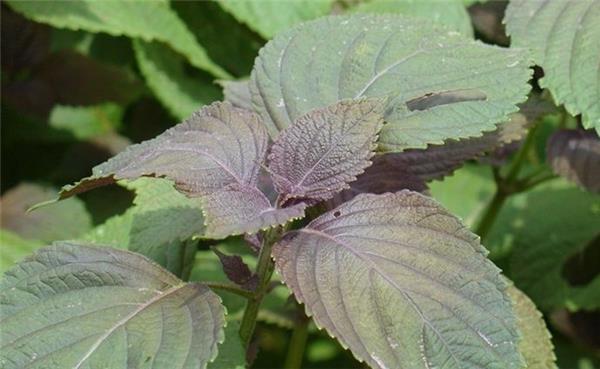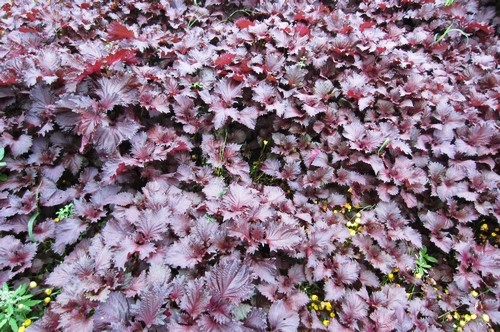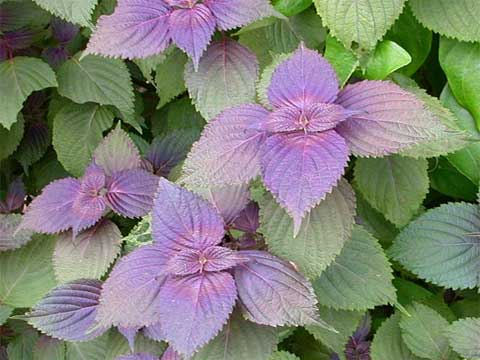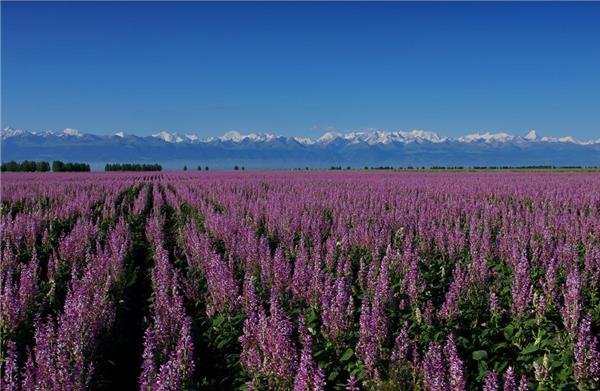Matters needing attention in perilla cultivation methods of perilla culture
Perilla also has some other names, such as red perilla, red perilla, black perilla and so on, because these colors are relatively similar, so they are named. The most important thing to pay attention to in perilla planting is to choose a suitable environment for its growth according to its growth habits, otherwise it is easy to cause it not to grow tall or blossom.

First, the morphological characteristics of perilla.
Annual herbs, plant height 60-150 cm, with special fragrance. Stems erect, quadrangular, purple or greenish purple, much branched, densely purple or white villous. Leaves opposite with long stalk, leaf blade wrinkled, ovate to broadly ovate, apex protruding or acuminate, margin coarsely rounded serrate, purple on both sides, or green on surface, purple on back. Racemes, terminal or axillary, flowers purplish red or reddish, calyx campanulate. Nutlets Obovate, gray-brown, seeds elliptic, minute. The florescence is from June to July and the fruiting period is from July to September.

2. Growth habits of Perilla frutescens
Like warm and humid climate, the soil requirements are not strict, but loose, fertile, well-drained sandy loam is the best, can also grow in slightly sticky soil, but the growth and development is poor.
Third, the function and value of perilla
1. Ornamental value: it is used to decorate flower beds and flower borders in the courtyard, and is suitable for cultivation by the wall in the courtyard.
two。 Medicinal efficacy: perilla can be used for medicine and spices, and leaves can be used for food. Sweating and relieving the surface, regulating qi, relieving fish and crab poison.

IV. Matters needing attention in perilla planting
Main points: mainly use sowing and reproduction. Spring sowing from March to April, covered with a thin layer of soil after sowing, slightly compacted, watered in time after sowing, germinated in 7-10 days, and the germination rate was more than 90%. The planting land should be fully fertilized with base fertilizer, fertilized for 2 to 3 times during the growing period, and the heart should be picked when the seedling is high and 25cm, so as to promote more branches.
Soil: perilla has strong adaptability to climate and soil, so it is best to choose loose and fertile sandy loam and loam with sufficient sunshine and good drainage, and the growth of heavy clay is poor. Loose soil
Temperature: requirements for environmental conditions. Perilla prefers a warm and humid climate. The seeds can germinate when the ground temperature is above 5 ℃, and the suitable germination temperature is 18-23 ℃. It can endure low temperature of 1-2 ℃ at seedling stage. The plant grows slowly at lower temperature. It grows vigorously in summer. The suitable temperature during flowering is 22-28 ℃, and the relative humidity is 75% Mel 80%.
Humidity: moisture tolerance, waterlogging tolerance, drought tolerance, especially in the product organ formation period, such as air is too dry, stems and leaves thick and hard, many fibers, poor quality.
Topdressing: perilla for a long time is relatively short, the whole grass can be harvested two and a half months after planting, and the whole grass is used as medicine, so it is mainly nitrogen fertilizer. Concentrate fertilizer before closing ridges.
Watering: watering in time after sowing or transplanting. We should also pay attention to drainage, dredge the operation road, and prevent stagnant water from disorderly roots and defoliation.
Harvest and processing: perilla should be harvested in sunny days with sufficient aroma to facilitate drying. Perilla leaves should be harvested from late July to early August, when perilla is not in bloom. While collecting seeds, pay attention to the selection and retention of improved varieties. Select plants with strong growth and high yield, wait until the seeds are fully mature before harvesting, drying and threshing for seed use.

Perilla cultivation at home requires suitable conditions. Generally speaking, perilla is more suitable for field culture. Large pots with large width and height are best used for pot culture, and flowerpots with good air permeability such as ceramic pots must be selected. only in this way can we avoid the phenomenon of seed rot and root rot after perilla sowing or planting. The above is the method of perilla planting introduced to you. I hope it can help you.
Related
- Wuhan Hospital Iron Tree Blooming Result Was Instantly Frightened by the Gardener Master
- Which variety of camellia is the most fragrant and best? Which one do you like best?
- What is the small blue coat, the breeding methods and matters needing attention of the succulent plant
- Dormancy time and maintenance management of succulent plants during dormancy
- Minas succulent how to raise, Minas succulent plant pictures
- What are the varieties of winter succulent plants
- How to raise succulent plants in twelve rolls? let's take a look at some experience of breeding twelve rolls.
- Attention should be paid to water control for succulent plants during dormant period (winter and summer)
- Watering experience of twelve rolls of succulent plants
- Techniques for fertilizing succulent plants. An article will let you know how to fertilize succulent plants.



